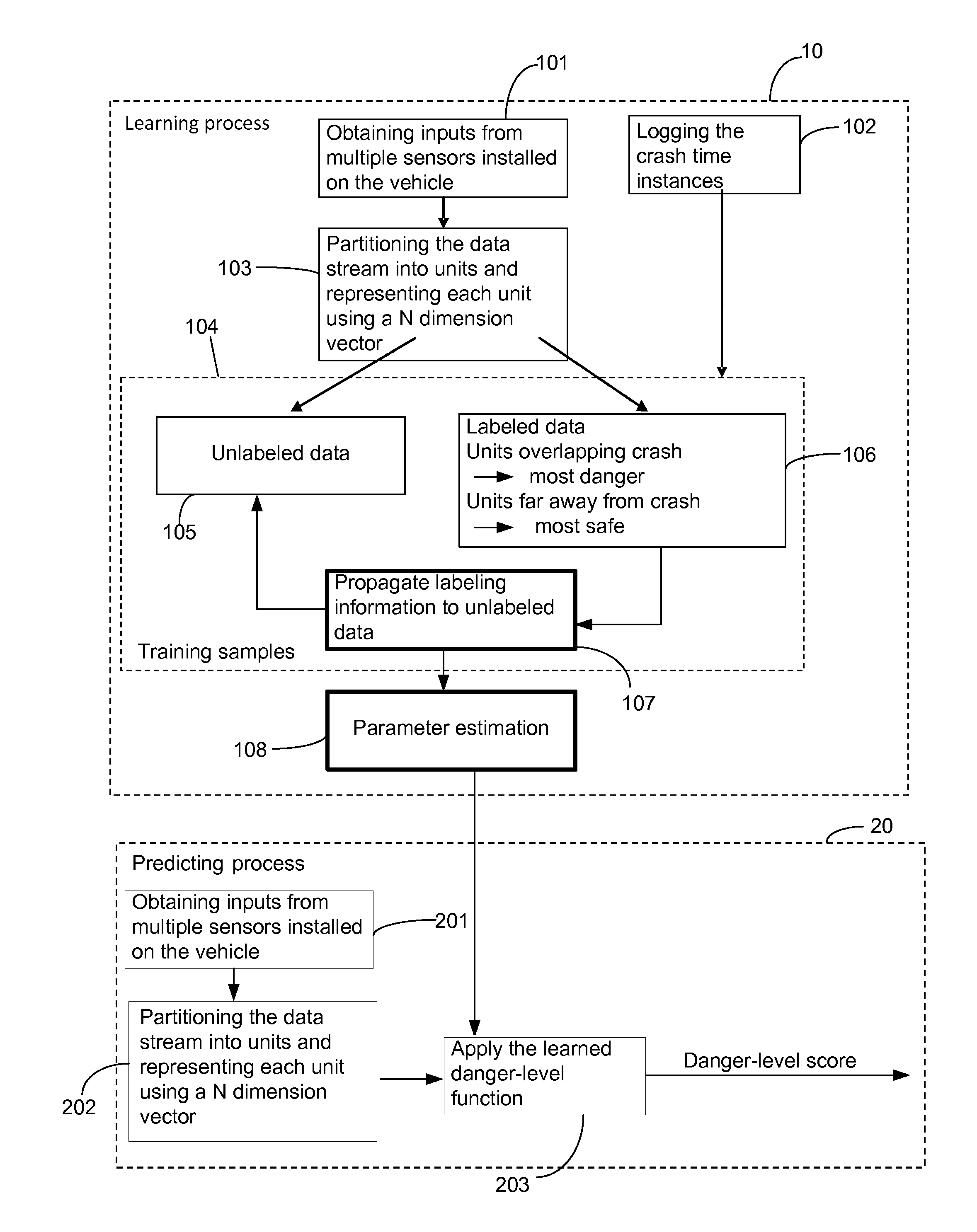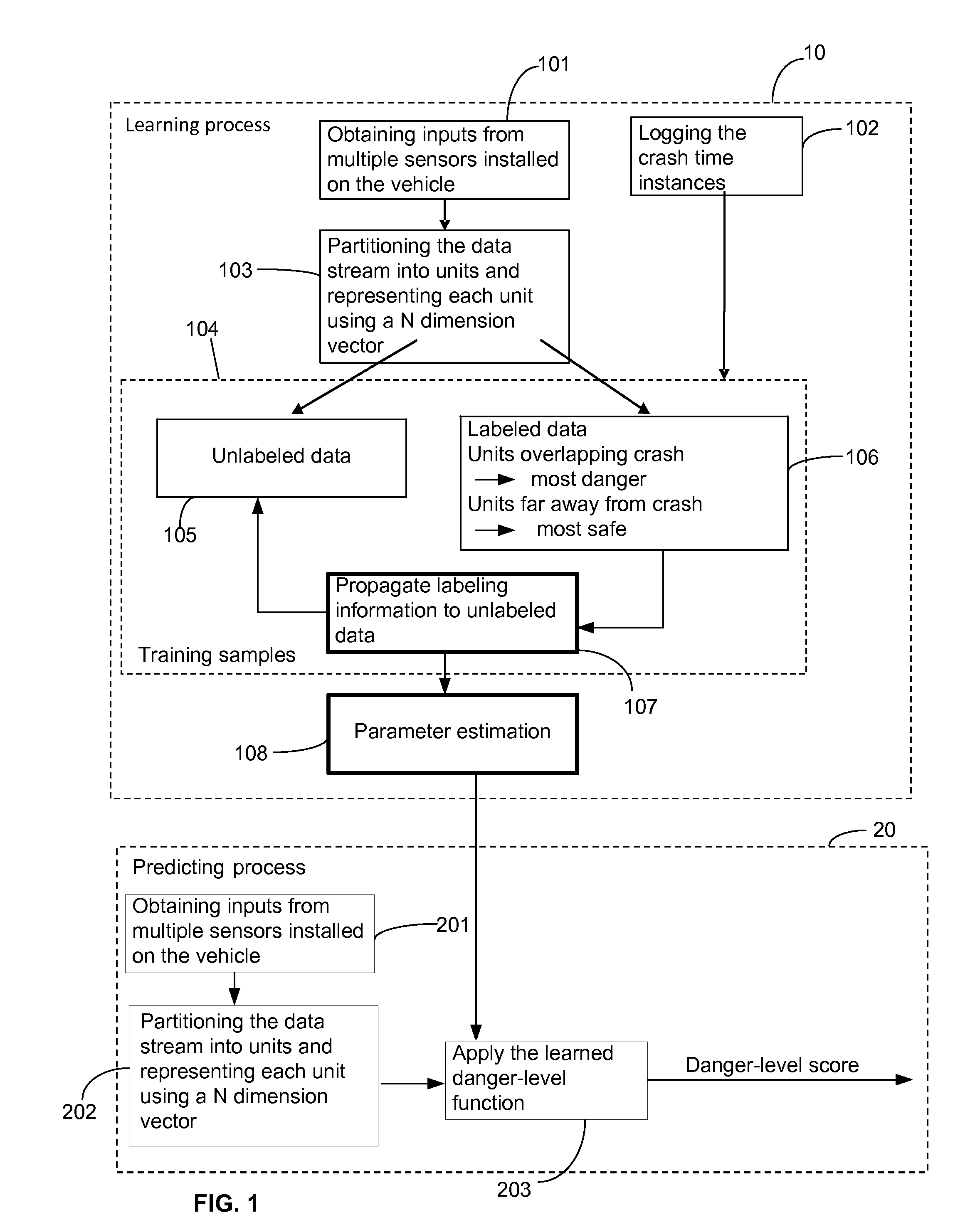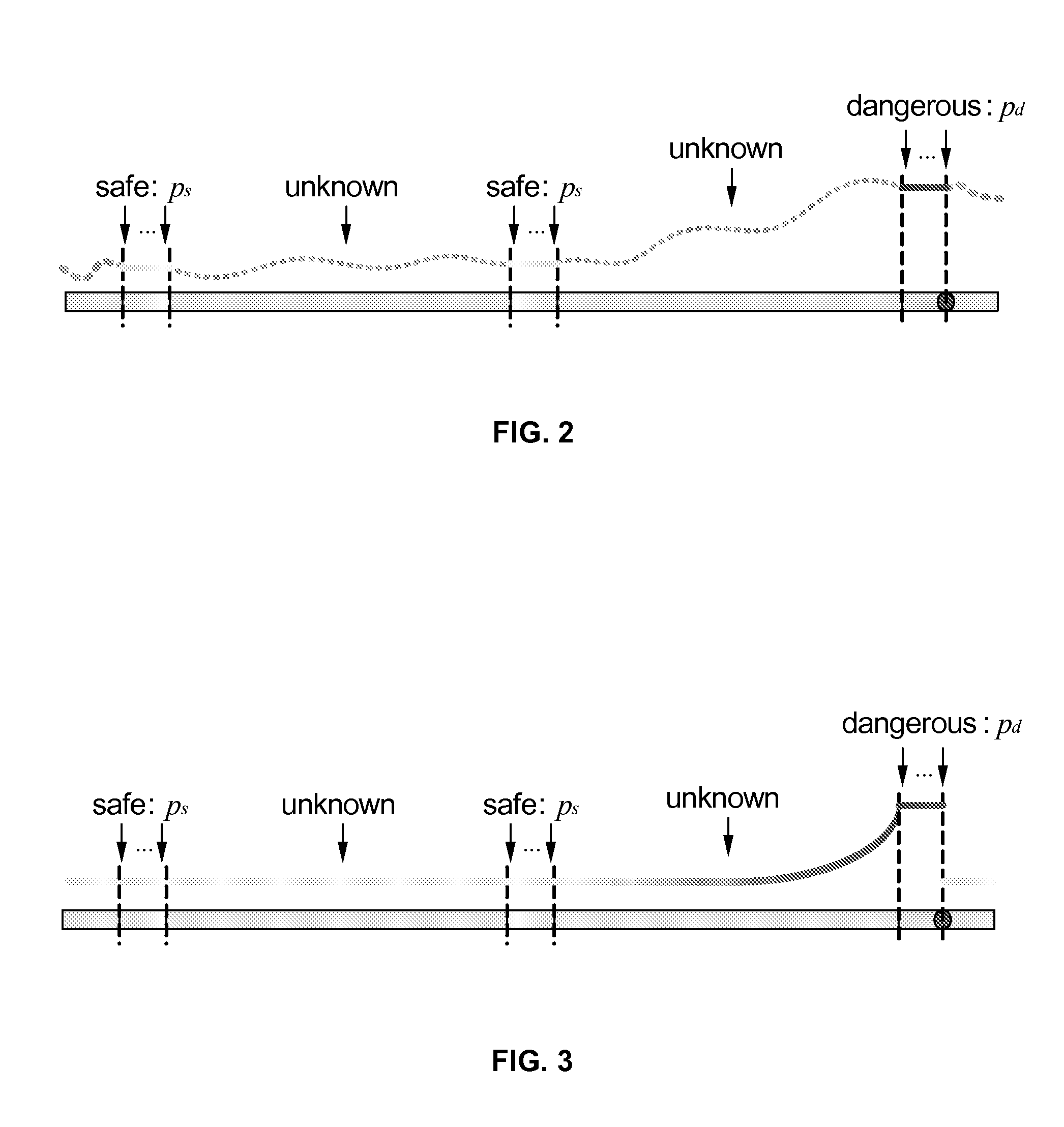Monitoring driving safety using semi-supervised sequential learning
a technology of driving safety and sequential learning, applied in the field of intelligent transportation systems, can solve the problems of inconvenient acquisition of physiological data, too expensive and difficult to obtain, and the risk prevention does not account for the changes in individual driving environments
- Summary
- Abstract
- Description
- Claims
- Application Information
AI Technical Summary
Benefits of technology
Problems solved by technology
Method used
Image
Examples
Embodiment Construction
[0014]A semi-supervised sequential learning method is described herein, which is capable of learning a danger-level estimation model or function ƒ(x) that may be used in a predicting method for measuring the danger-level of each driving state using a vehicle's dynamic parameters. The term “vehicle” includes without limitation, land, water, and air vehicles, however powered.
[0015]For the entire driving state, in one embodiment of the sequential learning method, it is assumed that: 1) states which correspond to driving accidents are the most dangerous states, and are assigned the highest danger-level; 2) states that are furthest from any accident states are the safest states, and are assigned the lowest danger-level; and 3) the danger-level of any other state is proportional to their spatio-temporal distances to the safe and accident states.
[0016]The sequential learning method estimates the danger-level model from training samples that satisfy the above three assumptions. The method r...
PUM
 Login to View More
Login to View More Abstract
Description
Claims
Application Information
 Login to View More
Login to View More - R&D
- Intellectual Property
- Life Sciences
- Materials
- Tech Scout
- Unparalleled Data Quality
- Higher Quality Content
- 60% Fewer Hallucinations
Browse by: Latest US Patents, China's latest patents, Technical Efficacy Thesaurus, Application Domain, Technology Topic, Popular Technical Reports.
© 2025 PatSnap. All rights reserved.Legal|Privacy policy|Modern Slavery Act Transparency Statement|Sitemap|About US| Contact US: help@patsnap.com



